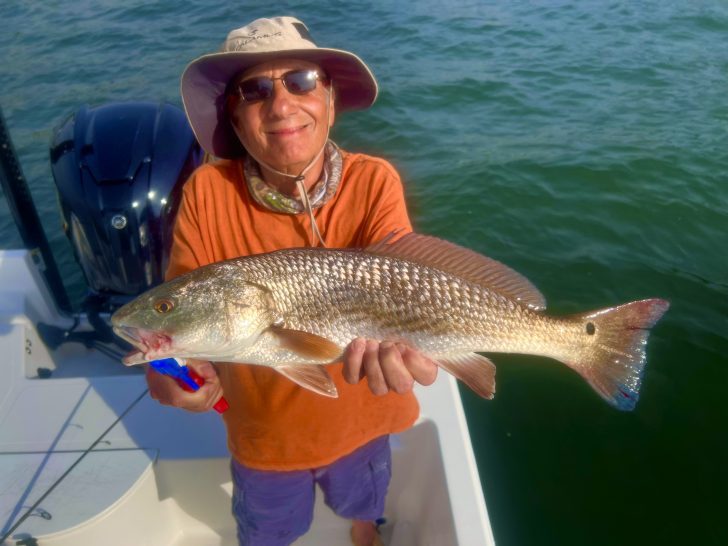March can be a thrilling month, especially if the water temperatures warm up like it typically does in Spring. Usually, this will spark the bait to show up in numbers on the flats and, where there is bait, predator fish are not too far behind.
With that being said, you will still have your wintertime fish around like sheepshead and trout that can still be caught, but snook and redfish will come alive with redfish taking center stage.
If we have the normal weather patterns that we usually get in March, the schools of redfish will move onto the flats and work the mangrove tree lines and oyster bars. Shrimp, scaled sardines, pinfish, finger mullet and cut bait, along with ladyfish, threadfin herring and any other baitfish that is oily and produces scent in the water.
If you are into the artificial style of fishing, nothing beats seeing a redfish get its head half out of the water to inhale a topwater lure. One of my favorites is the MirrOlure’s Pro Dog in the finger mullet skin series CS85MR or, for a smaller top water presentation, the MirrOmullet CS16MR is a great choice. You may miss some strikes from the redfish with the topwater lure, since its mouth is geared for bottom feeding. One of the things you can do for any fish striking a topwater lure is to wait a second when you see the strike before setting the hook. This gives the fish time to get a good grip on the lure before you set the hook, but you can’t wait too long, because they will spit the lure out once they figure out it’s not real. Typically, when not using topwater lures, the fish has had the bait for a second or two before you set the hook. When using topwater lures, you see the exact time they strike the lure, and a knee jerk reaction can sometimes lead to pulling the lure back out of the fish’s mouth. Some Pro-Cure scent gel added to the lure can get fish to hold that lure a little longer to give you a longer window of opportunity for a better hook set. For these lures, I like Pro-Cures mullet or the inshore super gel bait scents. If you like soft plastics, try a 1/8 to 1/4-ounce jig head with a Saltwater Assassin Lil P&V or the 4-inch Sea Shad in New Penny, 10W40 w/LT tail or Texas roach colors to name a few good colors–and don’t forget to add a little Pro-Cure.
On low tides, there can be large holes or edges of grass flats where the redfish will wait for the tide to come up, and they will move with the tide towards the mangrove tree lines or oyster mounds to feed. If you can, find an area holding good grass with sand holes and a mangrove tree line that also has an oyster mound. That is like staking three redfish magnets in one place.
Try to use your trolling motor on medium to low, since redfish can spook easily. Try to get there, set up and let the reds come to you. If you see a redfish school, do not chase them–it will shut the bite off, usually. The key is getting into casting distance without spooking them but, if you do, it usually only takes about 15 to 20 minutes for them to settle down, unless you spooked them out of the area. Be stealthy and reap the rewards.
Good luck and tight lines,
Capt. George Hastick

